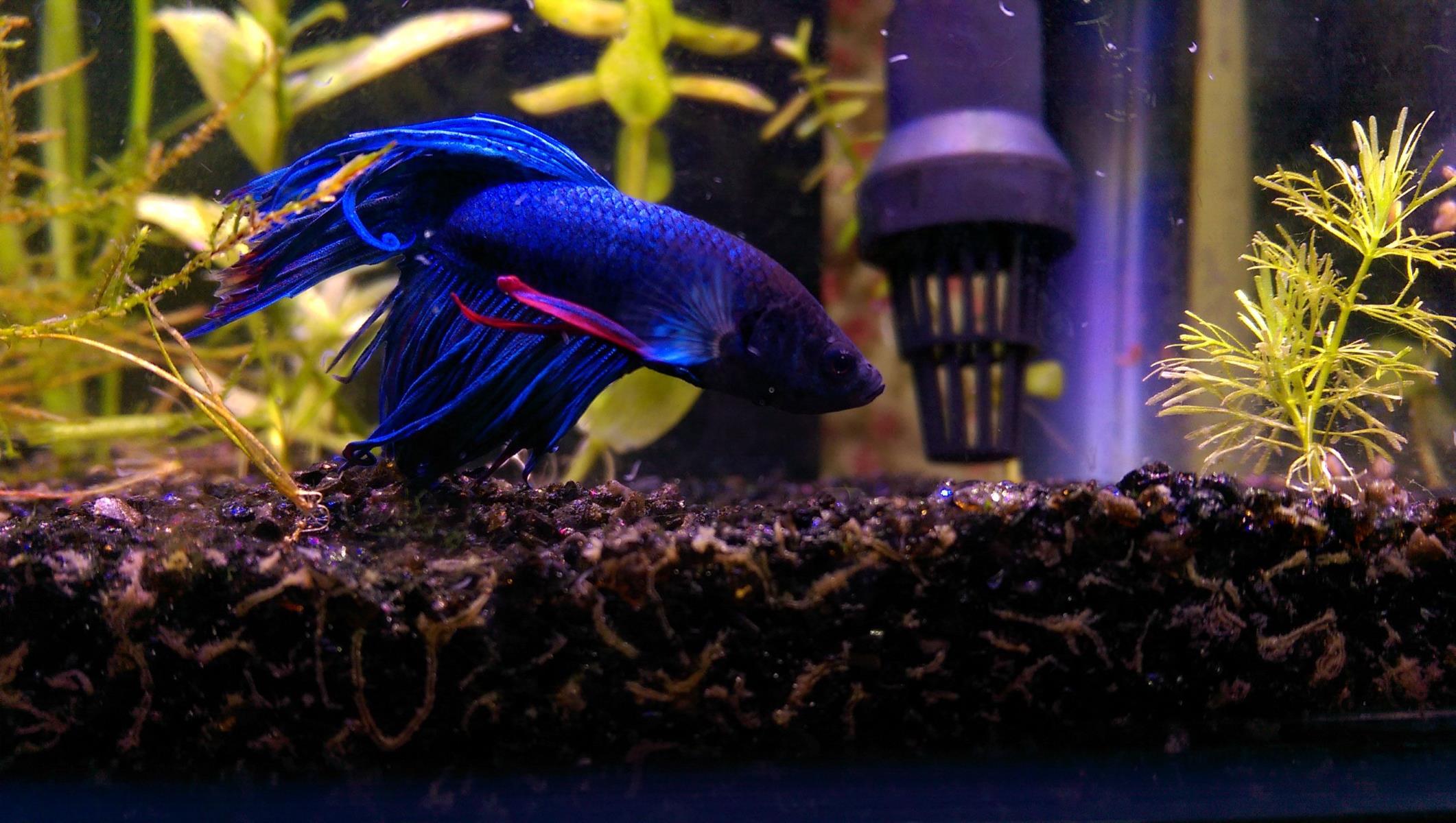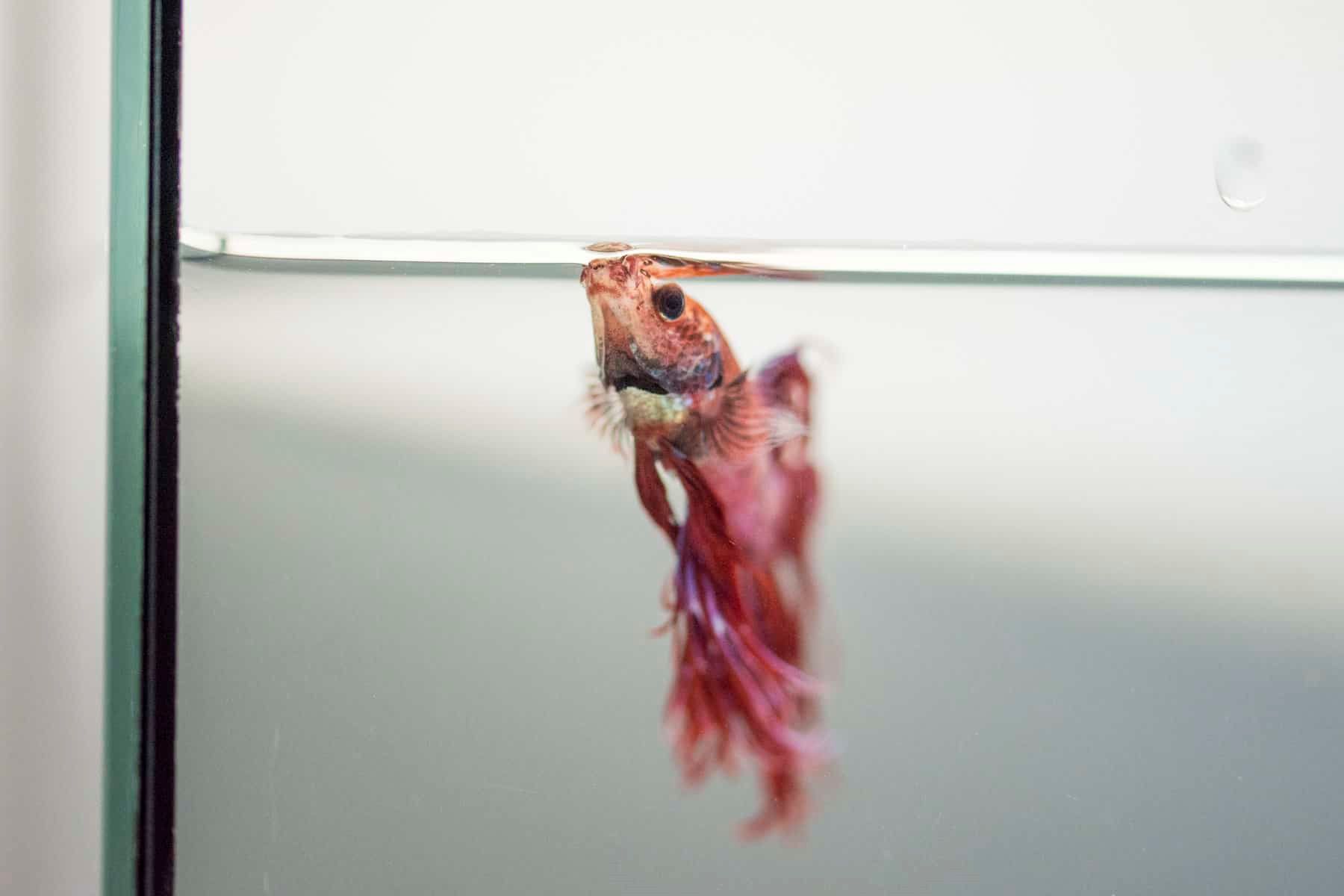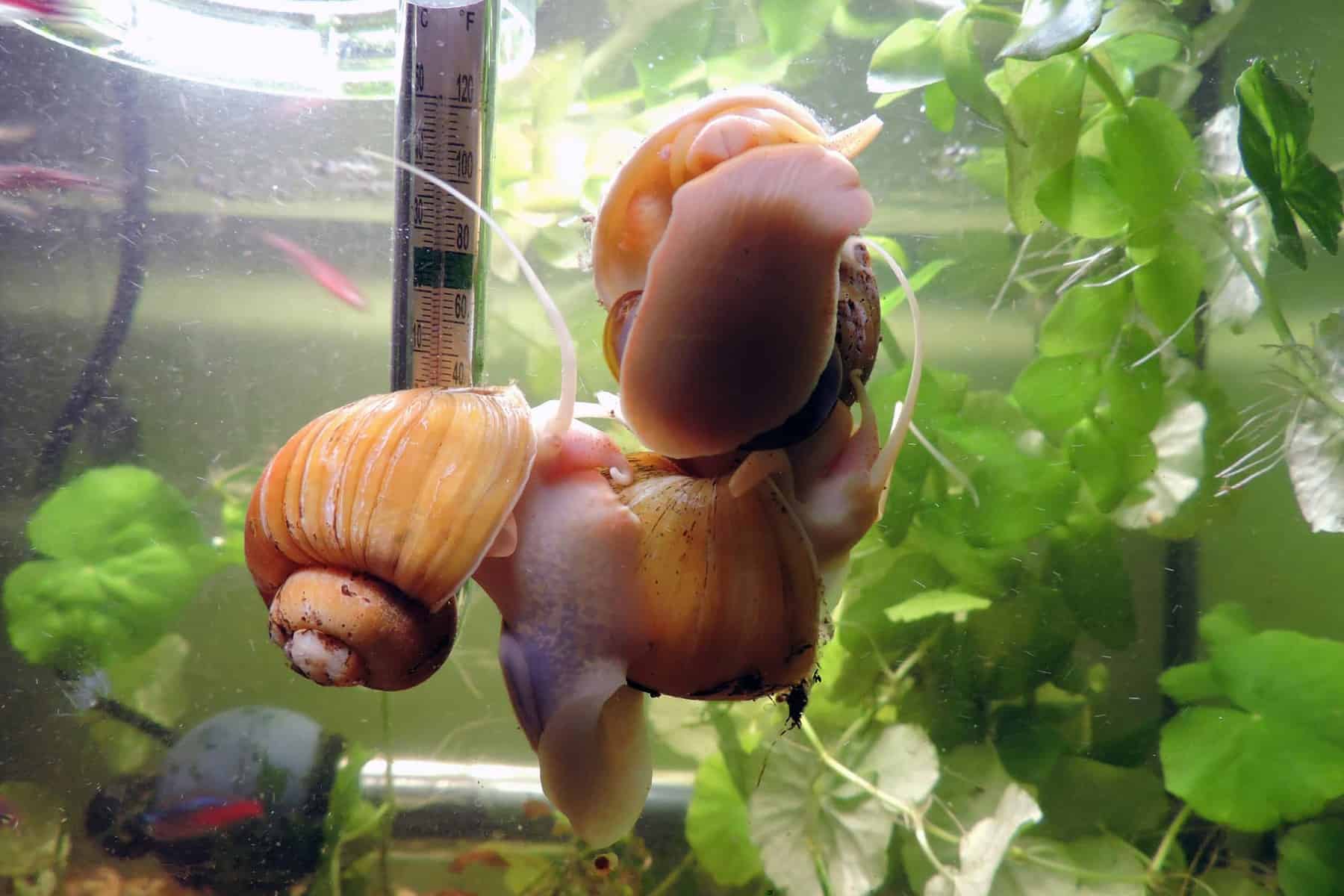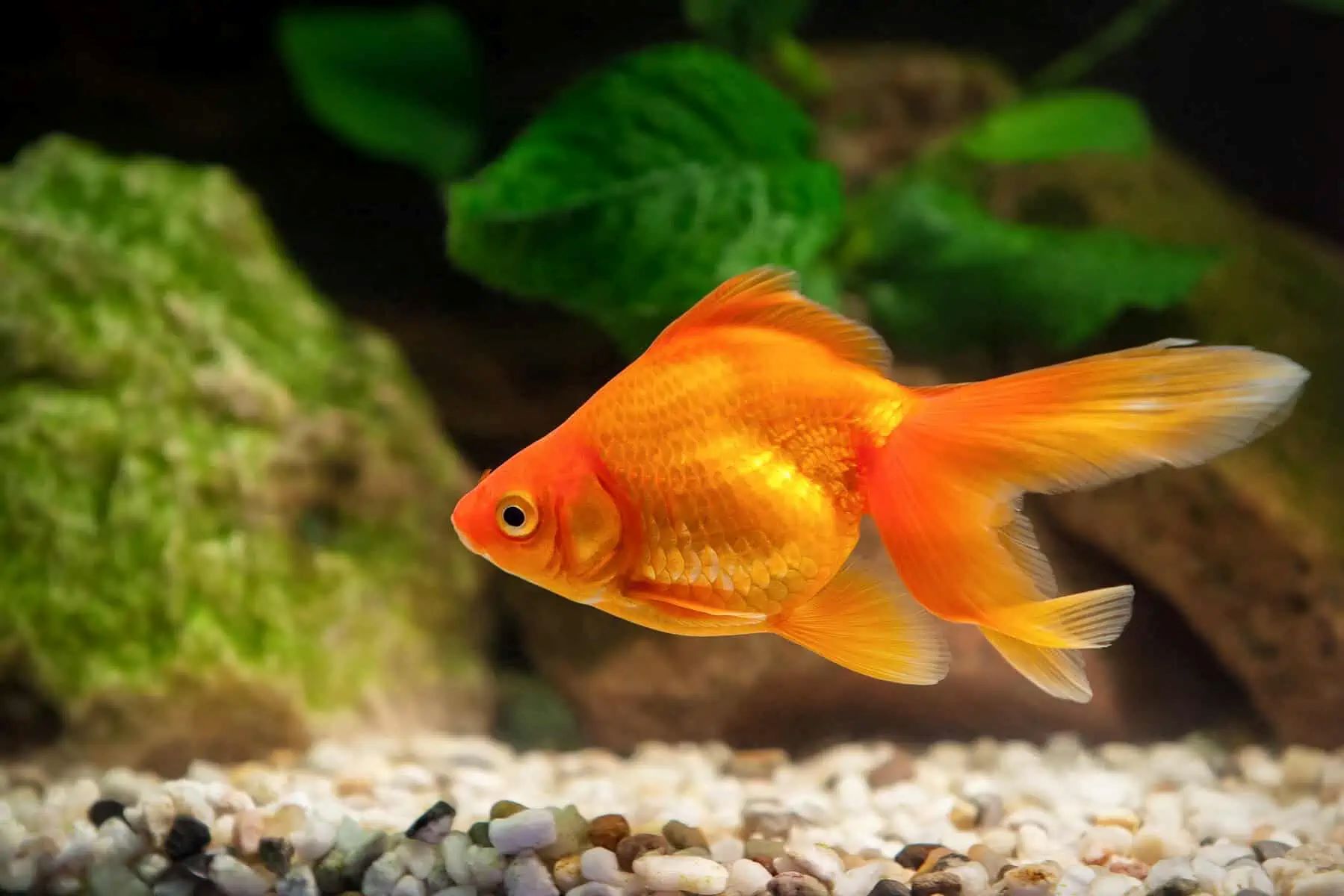Home>Pets & Animals>The Surprising Reason Your Betta Fish Goes On Its Side
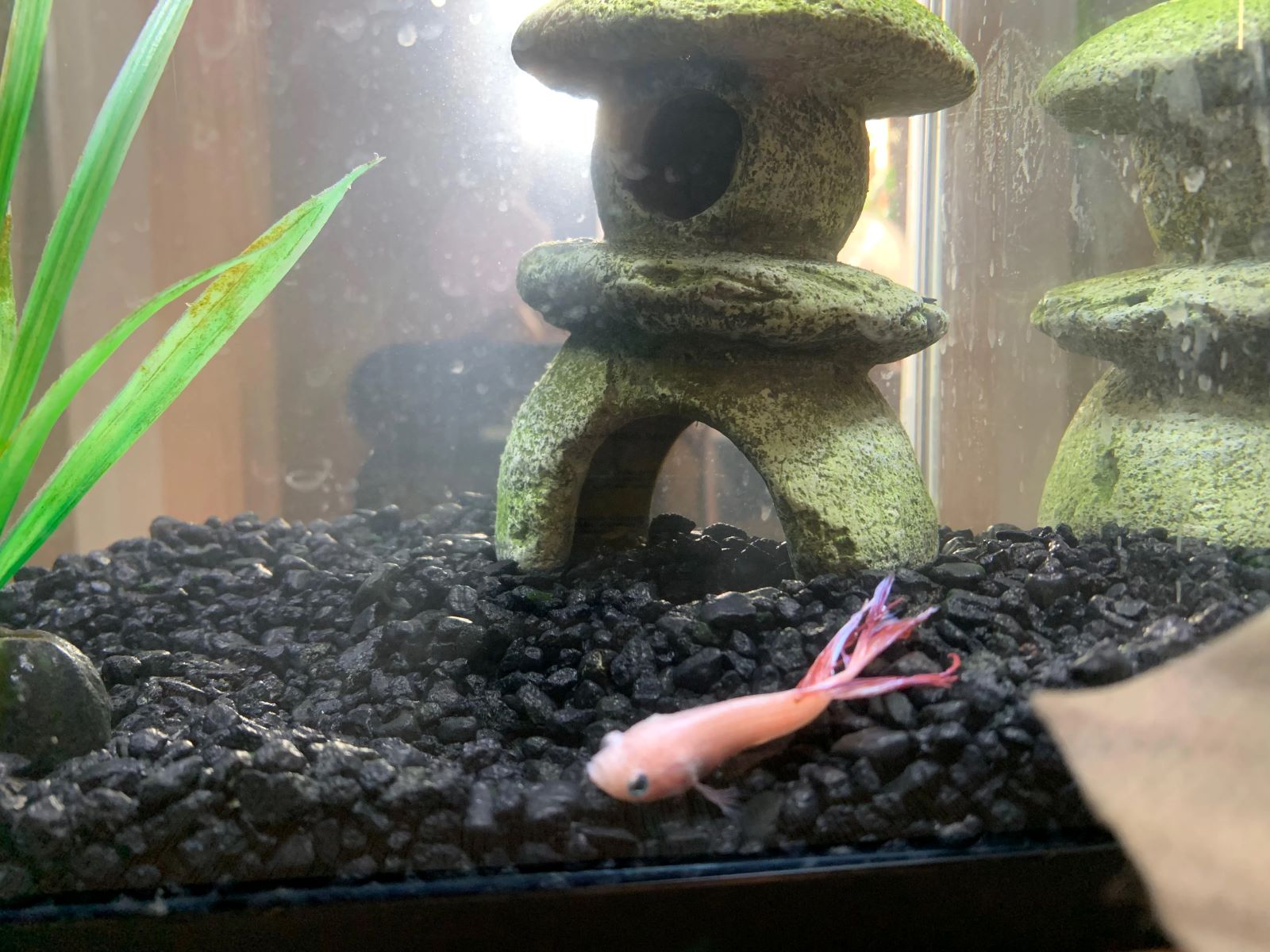

Pets & Animals
The Surprising Reason Your Betta Fish Goes On Its Side
Published: February 17, 2024
Discover why your betta fish may be swimming on its side. Learn how to care for your pet and ensure its health and happiness. Perfect for pet lovers and animal enthusiasts.
(Many of the links in this article redirect to a specific reviewed product. Your purchase of these products through affiliate links helps to generate commission for Regretless.com, at no extra cost. Learn more)
Table of Contents
Introduction
Betta fish, also known as Siamese fighting fish, are popular pets cherished for their vibrant colors and elegant fins. These captivating creatures are often kept in small, ornate tanks, adding a touch of serenity to any living space. However, as a betta fish owner, you may have observed your aquatic friend exhibiting an unusual behavior – going on its side. This peculiar sight can be quite alarming, leading you to wonder about the underlying reasons behind this behavior. In this article, we will delve into the various factors that can cause a betta fish to go on its side, shedding light on the surprising reasons behind this intriguing phenomenon.
Understanding the behavior of betta fish is crucial for providing them with a conducive and nurturing environment. By gaining insight into their natural tendencies and the factors that influence their well-being, you can ensure that your betta fish thrives in its aquatic habitat. Let's embark on a journey to unravel the mysteries surrounding the captivating world of betta fish and explore the unexpected factors that may lead to them going on their side.
Understanding Betta Fish Behavior
Betta fish, scientifically known as Betta splendens, are renowned for their striking appearance and captivating behaviors. Understanding the behavior of these magnificent creatures is essential for providing them with a suitable and enriching environment. Betta fish are inherently territorial and have a solitary nature, which is why they are often referred to as Siamese fighting fish. In their natural habitat, bettas stake out their own territories and fiercely defend them from intruders, displaying their vibrant fins and engaging in elaborate dances to establish dominance.
When kept in captivity, betta fish continue to exhibit territorial behavior, which can manifest in various ways. Male bettas, in particular, are prone to aggressive displays and may engage in flaring, where they extend their fins and gills to appear larger and more intimidating. Understanding this territorial nature is crucial when housing bettas, as it impacts their interactions with other fish and their overall well-being.
Furthermore, betta fish are labyrinth fish, equipped with a specialized organ called the labyrinth organ that allows them to breathe air from the water's surface. This unique adaptation enables bettas to survive in oxygen-deprived waters, such as shallow rice paddies and stagnant ponds, where oxygen levels may fluctuate. As a result, bettas have the remarkable ability to gulp air at the water's surface, making them well-suited for environments with low oxygen levels.
In addition to their territorial instincts and labyrinth organ, betta fish are also known for their interactive nature. They are intelligent and curious creatures that can recognize their owners and may even respond to human interaction. Observing their inquisitive behavior and providing them with mental stimulation through activities like chasing a laser pointer or following your finger along the tank's glass can contribute to their overall well-being.
Understanding the intricate behaviors of betta fish enhances our appreciation for these remarkable creatures and allows us to create environments that cater to their specific needs. By acknowledging their territorial tendencies, respiratory adaptations, and interactive nature, we can cultivate a deeper understanding of betta fish behavior and provide them with enriching and fulfilling lives in captivity.
The Role of Water Quality
The quality of water in a betta fish's habitat plays a pivotal role in its overall health and well-being. As aquatic creatures, bettas are entirely reliant on their environment to meet their physiological needs, making water quality a critical factor in their care. The following aspects of water quality significantly impact the health and behavior of betta fish:
-
Ammonia and Nitrite Levels: Ammonia and nitrite are toxic byproducts of fish waste and decaying organic matter. Elevated levels of these compounds can have detrimental effects on betta fish, leading to stress, lethargy, and increased susceptibility to diseases. Regular monitoring and maintenance of ammonia and nitrite levels through proper filtration and water changes are essential for ensuring a healthy aquatic environment for bettas.
-
pH Balance: The pH level of the water directly influences the physiological processes and overall well-being of betta fish. Maintaining a stable pH within the recommended range (generally between 6.5 and 7.5) is crucial for supporting essential biological functions and preventing stress-related behaviors in bettas.
-
Temperature Regulation: Betta fish are native to tropical regions and thrive in warm water conditions. Maintaining an appropriate water temperature, typically between 78 to 80 degrees Fahrenheit (25 to 27 degrees Celsius), is vital for ensuring the metabolic functions and immune response of bettas remain optimal. Fluctuations in water temperature can induce stress and compromise the overall health of betta fish.
-
Water Hardness: The hardness of water, determined by its mineral content, can impact the osmoregulation processes in betta fish. Soft water with low mineral content may lead to osmotic stress, while excessively hard water can pose challenges for bettas in maintaining their internal electrolyte balance. Striking a balance and providing moderately hard water within the recommended range is essential for supporting the physiological well-being of bettas.
-
Chlorine and Chloramine: Tap water often contains chlorine and chloramine, which are harmful to betta fish. Properly treating tap water with a dechlorinator before adding it to the aquarium is crucial for neutralizing these chemicals and ensuring a safe and habitable environment for bettas.
Maintaining pristine water quality is fundamental for creating a thriving and harmonious aquatic environment for betta fish. By diligently monitoring and addressing the various aspects of water quality, betta enthusiasts can safeguard the well-being of their aquatic companions and witness their vibrant colors, energetic behaviors, and graceful movements flourish in a healthy and nurturing habitat.
The Impact of Tank Size
The size of the tank housing a betta fish has a profound impact on its overall well-being and behavior. Inadequate tank size can lead to various stress-related issues and compromise the health of these captivating creatures. Understanding the significance of tank size and its implications for betta fish is essential for creating a suitable and enriching habitat.
In the wild, betta fish inhabit expansive territories, staking out their own space in the shallow waters of rice paddies, slow-moving streams, and densely vegetated ponds. This natural inclination towards claiming a defined territory underscores the importance of providing bettas with ample space in captivity. A larger tank size not only accommodates their territorial instincts but also offers opportunities for physical activity, exploration, and mental stimulation.
In a small and cramped tank, betta fish may exhibit signs of distress and lethargy, as they are unable to engage in natural behaviors such as swimming and exploring their environment. Additionally, limited space can contribute to heightened aggression in male bettas, as they feel compelled to defend their confined territory more fervently, leading to stress and potential health issues.
The minimum recommended tank size for a single betta fish is 5 gallons (18.9 liters), providing sufficient room for them to swim, exercise, and establish their own territory. Larger tanks, such as 10 gallons (37.9 liters) or more, offer even greater opportunities for bettas to thrive, fostering a more natural and dynamic aquatic environment.
In a spacious tank, betta fish can exhibit their full range of natural behaviors, from gracefully maneuvering through plants and decorations to building bubble nests, a hallmark of their well-being and contentment. Furthermore, a larger water volume in a well-sized tank contributes to better water stability, diluting toxins and maintaining water parameters more effectively, thereby promoting the overall health of betta fish.
By providing betta fish with a suitable and adequately sized tank, enthusiasts can create an environment that aligns with the natural tendencies of these captivating creatures. A spacious and enriching habitat not only supports the physical and psychological well-being of bettas but also allows enthusiasts to witness the vibrant colors, energetic movements, and engaging behaviors that define these remarkable aquatic companions.
Temperature and Oxygen Levels
Maintaining optimal temperature and oxygen levels is crucial for the well-being and vitality of betta fish. These two environmental factors play a pivotal role in supporting the metabolic functions, respiratory processes, and overall physiological equilibrium of these captivating aquatic creatures.
Betta fish are native to tropical regions, where they thrive in warm water conditions. As such, maintaining an appropriate water temperature within the recommended range of 78 to 80 degrees Fahrenheit (25 to 27 degrees Celsius) is essential for supporting their metabolic and immune functions. Fluctuations in water temperature can induce stress and compromise the overall health of betta fish, making it imperative for enthusiasts to invest in reliable aquarium heaters to maintain a stable and suitable temperature for their aquatic companions.
In addition to temperature regulation, ensuring adequate oxygen levels in the aquarium is vital for the respiratory well-being of betta fish. While bettas possess a specialized organ called the labyrinth organ that allows them to breathe air from the water's surface, providing ample oxygen in the water is essential for their overall health. Oxygenation can be achieved through the use of efficient filtration systems, surface agitation, and aeration devices, all of which contribute to maintaining oxygen-rich water that supports the respiratory needs of bettas.
Furthermore, the interaction between temperature and oxygen levels in the aquarium is interconnected, as warmer water holds less dissolved oxygen. This relationship underscores the importance of monitoring both parameters to ensure a harmonious aquatic environment for betta fish. During periods of elevated temperatures, such as during the summer months or in heated aquariums, it becomes crucial to enhance oxygenation to compensate for the decreased oxygen-carrying capacity of warmer water.
By paying close attention to temperature and oxygen levels, betta enthusiasts can create a habitat that aligns with the natural requirements of these captivating creatures. A stable and suitable temperature, coupled with adequate oxygenation, fosters an environment where bettas can thrive, exhibiting their vibrant colors, graceful movements, and engaging behaviors that captivate enthusiasts and enrich their lives.
Stress and Environmental Factors
Stress plays a significant role in influencing the behavior and well-being of betta fish. As sensitive and perceptive creatures, bettas are highly attuned to their environment, and various factors can trigger stress responses in these captivating aquatic companions. Understanding the sources of stress and environmental factors that impact betta fish is essential for creating a nurturing and harmonious habitat.
One of the primary sources of stress for betta fish is inadequate or fluctuating water parameters. Sudden changes in water temperature, pH levels, and water hardness can disrupt the delicate physiological balance of bettas, leading to stress-related behaviors such as lethargy, loss of appetite, and heightened aggression. Maintaining stable water conditions through regular monitoring and appropriate adjustments is crucial for mitigating stress and promoting the well-being of betta fish.
Environmental factors within the aquarium, such as the presence of aggressive tank mates or excessive visual stimuli, can also contribute to stress in bettas. While male bettas are renowned for their territorial nature, they are generally solitary fish and may become stressed in the presence of other aggressive or fin-nipping companions. Providing bettas with secluded areas, such as live plants and decorations, can offer refuge and reduce stress-inducing interactions within the aquarium.
Inadequate hiding spaces and insufficient environmental enrichment can also lead to stress in betta fish. These intelligent creatures benefit from a stimulating and dynamic environment, where they can engage in natural behaviors such as exploring, foraging, and seeking shelter. Enthusiasts can create enriching habitats for bettas by incorporating live plants, caves, and other aquatic decor that offer opportunities for mental stimulation and physical engagement, thereby reducing stress and promoting their overall well-being.
Moreover, external stressors such as loud noises, sudden movements, and excessive disturbances in the surrounding environment can impact the behavior of betta fish. Placing the aquarium in a tranquil and relatively quiet area can minimize external stressors and create a serene atmosphere conducive to the contentment of bettas.
By addressing stress and environmental factors, betta enthusiasts can cultivate a habitat that fosters the physical and psychological well-being of these captivating aquatic companions. Creating a tranquil and enriching environment, maintaining stable water parameters, and minimizing stress-inducing stimuli contribute to the overall health and vitality of betta fish, allowing enthusiasts to witness their vibrant colors, graceful movements, and engaging behaviors that define these remarkable aquatic companions.
Health Issues and Diseases
The health of betta fish is paramount to their overall well-being, and understanding common health issues and diseases that affect these captivating aquatic creatures is essential for proactive care and timely intervention. Despite their resilience, bettas are susceptible to various ailments and conditions that can impact their vitality and behavior. By familiarizing ourselves with these health concerns, we can better equip ourselves to provide the necessary care and support for our betta companions.
One prevalent health issue that betta fish may encounter is fin rot, a bacterial infection that affects the fins and tail. Fin rot often manifests as fraying or disintegration of the delicate fin tissue, accompanied by discoloration and inflammation. This condition can be triggered by poor water quality, stress, or physical injury, underscoring the importance of maintaining pristine water conditions and minimizing stress-inducing factors in the aquarium.
Another common ailment that afflicts bettas is ich, or white spot disease, caused by the parasite Ichthyophthirius multifiliis. Ich presents as small white spots resembling grains of salt on the skin and fins of affected fish, often leading to irritation and discomfort. Prompt identification and treatment of ich are crucial for preventing its spread and minimizing the impact on betta fish.
Furthermore, bettas are prone to developing swim bladder disorders, which can impede their ability to maintain buoyancy and swim effectively. Swim bladder issues can result from overfeeding, constipation, or bacterial infections, leading to symptoms such as buoyancy irregularities and abnormal swimming patterns. Ensuring a balanced diet, maintaining proper water parameters, and providing adequate enrichment can help mitigate the risk of swim bladder disorders in bettas.
Additionally, fungal infections, velvet disease, and parasitic infestations are among the health challenges that betta fish may encounter. Recognizing the symptoms associated with these conditions, such as abnormal behavior, changes in appetite, and external abnormalities, empowers betta enthusiasts to seek appropriate treatment and preventive measures to safeguard the health of their aquatic companions.
Regular observation, attentive care, and proactive measures to maintain optimal water quality and environmental conditions are integral to preventing and addressing health issues in betta fish. By staying vigilant and responsive to the well-being of our betta companions, we can create a nurturing and supportive environment that promotes their resilience and vitality.
Incorporating a diverse and enriching diet, providing suitable tank mates, and adhering to proper aquarium maintenance practices are essential components of proactive betta care. Through these efforts, we can cultivate a habitat where bettas flourish, exhibiting their vibrant colors, graceful movements, and engaging behaviors that define these remarkable aquatic companions.
Conclusion
In conclusion, the captivating world of betta fish encompasses a myriad of intriguing behaviors, environmental dependencies, and health considerations that collectively shape their well-being in captivity. Understanding the surprising reasons behind their peculiar behavior of going on their side sheds light on the multifaceted factors that influence the lives of these remarkable aquatic companions.
From their territorial instincts and labyrinthine respiratory adaptations to the critical role of water quality, tank size, temperature regulation, and stress management, the care and stewardship of betta fish demand a holistic approach that integrates both scientific understanding and compassionate observation. By recognizing the intricate behaviors and environmental sensitivities of bettas, enthusiasts can create habitats that cater to their specific needs, allowing these captivating creatures to thrive and exhibit their vibrant colors, graceful movements, and engaging behaviors.
The profound impact of water quality on the health and behavior of betta fish underscores the importance of diligent monitoring and maintenance, ensuring that their aquatic environment remains pristine and supportive. From ammonia and nitrite levels to pH balance and temperature regulation, meticulous attention to water parameters is fundamental for cultivating a thriving and harmonious habitat for bettas.
Moreover, the significance of tank size cannot be overstated, as it directly influences the physical and psychological well-being of betta fish. Providing ample space for exploration, exercise, and territorial establishment in a well-sized tank fosters an environment where bettas can exhibit their full range of natural behaviors, contributing to their overall contentment and vitality.
Temperature regulation and oxygenation emerge as critical factors in sustaining the metabolic and respiratory equilibrium of betta fish. By maintaining stable water temperature and ensuring adequate oxygen levels, enthusiasts can create an environment where bettas thrive, displaying their vibrant colors and graceful movements that captivate and enrich the lives of their caregivers.
Addressing stress and environmental factors, along with proactive measures to prevent and manage common health issues and diseases, completes the holistic approach to betta care. By creating tranquil and enriching environments, minimizing stress-inducing stimuli, and staying vigilant to their well-being, enthusiasts can provide the necessary care and support for their betta companions, fostering resilience and vitality in these remarkable aquatic creatures.
In essence, the care and stewardship of betta fish encompass a delicate balance of scientific understanding, attentive observation, and compassionate dedication. By embracing this holistic approach, enthusiasts can create habitats where bettas flourish, exhibiting their vibrant colors, graceful movements, and engaging behaviors that define these remarkable aquatic companions.

